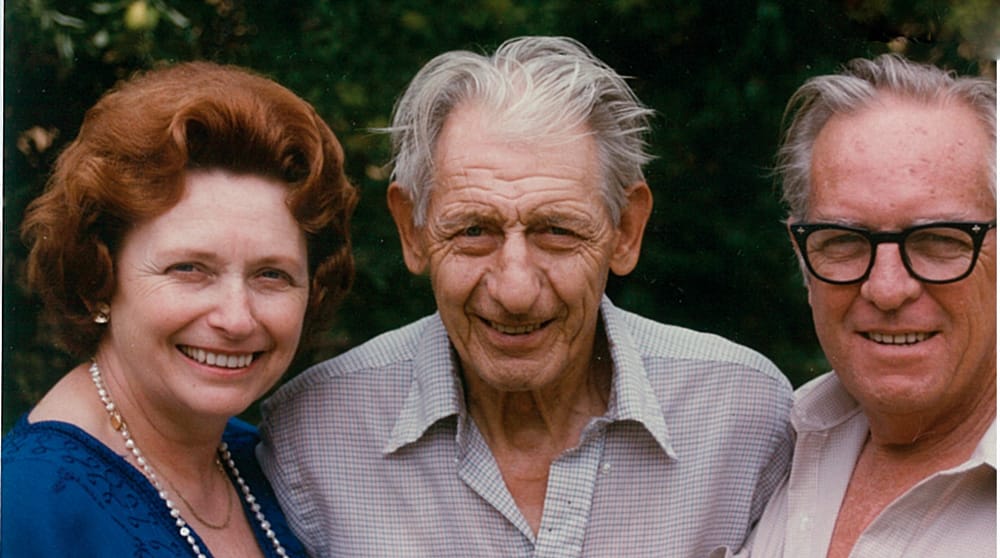Having a Say
May 1, 2014

Marie McDonald looks back on blazing a path for fellow women in the elevator industry.
Marie McDonald entered the world in a remarkable way and has stood out ever since. She was born in Seattle, and her mother died in childbirth. At only 10 days old, she went to live with her grandparents on their Sonoma, California, chicken ranch. “So I guess I am about as close to being a California girl as you can get,” she said. She spent much of her life in San Francisco, making a name for herself in the elevator industry along the way. She did so when women were a rarity in the industry.
In the late 1950s, she was instrumental in forming what would become the first National Association of Women in Construction chapter on the U.S. West Coast. After learning she had a knack for sales at Dwan Elevator Co. (which, until 1969, was owned by her father and inventor of the hill-climbing system Hillavator, Sherman Camp) McDonald became the first woman in California to receive an elevator contractor’s license in 1958. In 1976, she founded elevator- inspection firm McDonald Elevator Co. and was named the San Francisco Chamber of Commerce’s 1988 Entrepreneur of the Year. Cited by many elevator women as someone they model themselves after, McDonald was the recipient of the National Association of Elevator Contractors (NAEC) William C. Sturgeon Distinguished Service Award in 2001. Now retired to San Jacinto County, California, McDonald stays busy campaigning for local Democratic candidates and issues, reading and spending time with family.
“Here I was, a young woman without an engineering degree. I wasn’t sure they would take me seriously, but they did.” – Marie McDonald
Success Takes a Circuitous Route
The road to becoming an elevator-industry powerhouse was bumpy at first, McDonald said. As a child, she enjoyed school and got good grades but struggled with shyness. After high school, she married, had a daughter, got divorced and enrolled in the City College of San Francisco to study accounting. “I had just about finished all of the requirements to become a Certified Public Accountant (CPA), and, as part of my training, I had to work for a CPA for two years in order to take the test,” she remembers. “I went out on audits and found I didn’t like it. I didn’t want to be recording what was done – I wanted to be in on the decisionmaking.”
Right around this time, Camp asked his daughter to install a new bookkeeping system at Dwan, and that led to McDonald’s lifelong career in elevators. When Dwan’s bookkeeper resigned, Camp asked his daughter to be office manager. “This was in the mid 1950s, when women did not have much opportunity,” she notes. Managing the office led to an opportunity to market and sell Hillavators.
“I sold [Hillavators] all over the world – in the Caribbean, Mexico, Canada,” McDonald said. She received a huge confidence boost when she sold a system to a golf course in Toronto looking to replace homemade equipment that had resulted in serious injury to a passenger, a frequently occurring problem in the 1950s and 1960s (ELEVATOR WORLD, October 1959). “I was really nervous about it,” she said of the sales call. “Here I was, a young woman without an engineering degree. I wasn’t sure they would take me seriously, but they did. It was one of the first major projects to win approval from the elevator authorities in Toronto.”
McDonald Strikes Out on Her Own
In 1969, Camp sold controlling interest in Dwan to a colleague. Unbeknownst to McDonald, that put her on the path to entrepreneurship. She eventually found that she and the new owner held different views on the company’s direction. She remembers when she realized it was time to go:
“We were out on Lake Shasta on our houseboat with (then NAEC president) P.D. King and his wife when they asked how it was going [with the owner]. Well, that just broke the dam. I let out a lot of frustration and unhappiness that I didn’t realize I had been stuffing down for quite a while.”
McDonald realized nothing was forcing her to stay, so she started laying the groundwork to launch her own company. She made undercover trips to colleagues such as Lou Blaiotta at Columbia Elevator in Bridgeport, Connecticut, and Ted Cheney at Cheney Elevators in Cudahy, Wisconsin. “I told each of them I was starting my own company and [asked if they] would go with me, and they all said, ‘Yes,’” she recalled. “That was in February or March 1977, and they all kept the secret until I opened [the company] in August 1977, which I thought was pretty special.”
Relationships, Company Grow
Thanks to networking and determination, McDonald built McDonald Elevator Co. into a powerful little engine, landing a multiyear U.S. government contract covering elevator inspections in 10 states, an achievement she credits to the knowledge and insight of Dale Wallace, who had come to McDonald’s company from Haughton Elevator, where he was construction superintendent. She also landed contracts with the U.S. Postal Service, and the U.S. General Services Administration, which included twice-a-year inspections of the federal building in Honolulu. At its peak, McDonald Elevator employed 15 people.
Through NAESA International, McDonald earned her QEI certification, and in 1976, was elected to NAESA’s board. She served as treasurer for 17 years. In the mid 1980s, she became the first female certified elevator inspector in the U.S. Through NAESA and other organizations and events, she forged many industry relationships that persist to this day, including with Martha Hulgan, president of MMH & Associates, and Ricia S. Hendrick, Elevator World, Inc. president and publisher.
She also has close relationships with her children. McDonald is the mother of four: oldest daughter, Kimara; second daughter, Marquette, who passed away in 2002; third daughter Lori and son, Adam. A former production designer in Hollywood, Adam is co-producer and director of the original Safe-T-Rider® video. Lori, meanwhile, worked with McDonald at Pacific Access for the past 15 years.
Thanks to networking and determination, McDonald built McDonald Elevator Co. into a powerful little engine, landing a multiyear U.S. government contract covering elevator inspections in 10 states .
Throughout most of her career, McDonald said she had the support of her husband, John McDonald, a phone-company employee she married in 1969. “He wasn’t involved in the industry, but I always said he was the wind beneath my wings – he gave me the energy to succeed,” she said. They had many good times together, she said, recalling a trip to the NAEC convention in Hawaii in the 1970s:
“We had just been on a wonderful tour to the most inaccessible areas of the island, including volcanoes, which John just loved, and that very night, after I had been elected to the NAEC board, he had a heart attack, and we spent all night in the hospital. He ended up having a bypass operation. He had such a good sense of humor; he used to tease me that not many husbands would go to the extent he did to give their wives another week in Hawaii.”
John McDonald made a relatively fast recovery, and the couple flew home to Walnut Creek, California, eight days later. When he passed away in 1989, it marked another turning point for McDonald. She explained: “He was the heart and soul behind me, and I just lost interest. I didn’t walk away from the company, but I might as well have, because it went downhill. Finally, I realized that I had to sell it, so I let that be known and sold it to a friend who was an elevator contractor.”
McDonald worked for Pacific Access, Contractors in Redwood City, the company that took over McDonald Elevator, until 2013. Upon her retirement, colleagues reflected on McDonald’s involvement in and dedication to A17 and A18 code committees. Pacific Access President Kurt Frietzche called McDonald an industry pioneer. “As one of the first women to own and operate a business in this field, she showed great tenacity and gumption,” he said. Garaventa Lift, whose products are sold through Pacific Access, added that “her work with the A18 code committee has helped define accessibility equipment and has provided for a better understanding of the equipment for contractors and inspectors alike.” Throughout her career, she has been a familiar face at industry events such as those of NAEC and is active in organizations such as the Vertical Initiative for Elevator Escalator Women. Political activities occupy a large portion of her time these days, to the extent that she was named Democrat Volunteer of the Year for Contra Costa County in 2013. She also likes to read, particularly mystery novels and classics by fellow Californian John Steinbeck:
“I think my favorite Steinbeck book is East of Eden. The part about the Chinese elders studying Hebrew in order to determine what the story of Cain and Abel was actually about – regarding a man having a say over his own life – that was such a wonderful sequence in that book.”
Get more of Elevator World. Sign up for our free e-newsletter.









